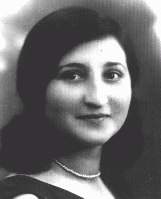You searched for: 4种方法做好谷歌的seo【TG飞机:@bapingseo】谷歌seo年薪多少【TG电报:@bapingseo】瑙鲁googleseo【Telegram:@bapingseo】05566辉煌棋牌e绅士ios客户端?7xYLiL/c7EZ30.html
<< Previous | Displaying results 301-325 of 480 for "4种方法做好谷歌的seo【TG飞机:@bapingseo】谷歌seo年薪多少【TG电报:@bapingseo】瑙鲁googleseo【Telegram:@bapingseo】05566辉煌棋牌e绅士ios客户端?7xYLiL/c7EZ30.html" | Next >>
-
Ossi Stojka
ID CardOssi was the youngest of six children born to Roma ("Gypsies") who traveled in a family wagon. His family was Roman Catholic. Their caravan spent winters in Vienna, Austria's capital, and summers in the Austrian countryside. The Stojkas belonged to a tribe called the Lowara Roma, who made their living as itinerant horse traders. Ossi's ancestors had lived in Austria for more than 200 years. 1933-39: Ossi was 2 years old when Germany annexed Austria in March 1938. The Stojka family wagon was parked for the…

-
Rozia Susskind
ID CardRozia was born to a Jewish family in the town of Kolbuszowa. Her family lived outside of town, near her uncles. The Susskinds owned a flour mill and a lumber mill. Their home was one of the few in the area with electricity, which was generated at their mills. Rozia had an older sister, Hanka, and an older brother, Yanek. 1933-39: In the early 1930s, the Susskinds' mills burned down. Hanka moved to Cracow to study in the university and married, and Yanek was working in Kolbuszowa's Jewish bank. The…

-
Rudolf Acohen
ID CardRudolf, known as Rudi, and his brother were born in Amsterdam to a Jewish family of Spanish descent. The family lived in a pleasant neighborhood in the southern part of the city. Rudi attended Montessori grade school and high school. 1933-39: For summer vacation in 1935 Rudi's parents rented a house near the beach in Zandvoort, near Amsterdam. There he met a girl, Ina, and they became good friends. In the summer they discovered that they would be attending the same Montessori high school. Rudi and Ina and…
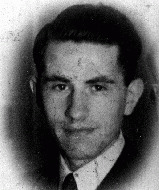
-
Moise Gani
ID CardMoise's family were Romaniot Jews, a group that had lived in Greek cities and the Balkans for 1,100 years. In the early 1920s Moise's family moved to Italy, where his father tried to find work. Moise attended school, and when his family returned to Greece after two years, he remained in Italy to complete school. When Moise returned to Preveza at age 17, he had forgotten Greek. 1933-39: Moise worked as a bookkeeper and administrator at the local electric company in Preveza, and he lived with his parents.…
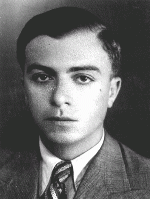
-
Marriage certificate obtained by Dr. Mohamed Helmy
DocumentMarriage certificate obtained by Dr. Mohamed Helmy stating that Anna Gutman (Boros) married an Egyptian man in a ceremony held in Helmy’s home. Dr. Helmy also received certification from the Central Islamic Institute in Berlin attesting to Anna’s conversion to Islam, which the marriage certificate reflects. Translation: Marriage certificate On Wednesday June 16, 1943, we have certified the marriage contract between Abdelaziz Helmy Hammad, 36 years old, who was born on May 6th, 1906, in Faqous,…

-
German forces in Italy surrender to the Allies
FilmAllied forces occupied most of Germany by the end of April 1945. German forces fighting in Italy were the first to surrender unconditionally to the Allies. Representatives of the German command in Italy signed the surrender on April 29, and it became effective on May 2, 1945. Five days later, on May 7, 1945, Germany surrendered unconditionally to the western Allies, ending the war in Europe.
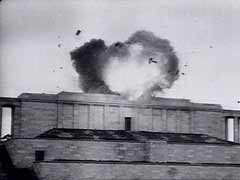
-
Remilitarization of the Rhineland
FilmProvisions of the 1919 Treaty of Versailles forbade Germany (defeated in World War I) to station armed forces in a demilitarized zone in the Rhineland—a region in western Germany bordering France, Belgium, and part of the Netherlands. The treaty stipulated that Allied forces—including US troops—would occupy the region. In a blatant violation of the treaty, on March 7, 1936, Hitler ordered German troops to reoccupy the zone. Hitler gambled that the western powers would not intervene. His action…
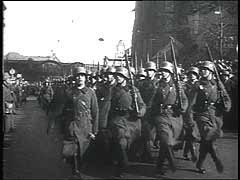
-
German territorial losses, Treaty of Versailles, 1919
MapView map showing German territorial losses following the Treaty of Versailles after World War I. Learn how the treaty affected lands controlled by Germany

-
Izak Lichtenstein Testimony Excerpt
ArticleRead an excerpt from Izak Lichtenstein’s 1947 testimony about the resistance movement in the Lachva (Lachwa) ghetto.
-
Operation Torch: The Anglo-American Invasion of French North Africa
ArticleOperation Torch was the Allied invasion of French Morocco and Algeria during the North African Campaign of World War II. Learn more.
-
SS: Key Dates
ArticleKey dates in the history of the SS (Schutzstaffel; Protection Squadrons), charged with the leadership of the “Final Solution,” the murder of European Jews.

-
SS and Nazi Policy
ArticleThe SS was the elite guard of the Nazi regime and became a virtual state within a state in Nazi Germany. Learn about its role in carrying out Nazi policies.

-
Berlin
ArticleBerlin was home to Germany’s largest Jewish community. It was also the capital of the Third Reich and the center for the planning of the "Final Solution."

-
Hungary after the German Occupation
ArticleThe Nazis invaded Hungary in 1944 to prevent the government from negotiating an armistice with the Allies. Learn more about conditions in occupied Hungary.

-
Locating the Victims
ArticleThe Germans and their collaborators used paper records and local knowledge to identify Jews to be rounded up or killed during the Holocaust.

-
Death Marches
ArticleNear the end of WWII, the Germans began marching prisoners out of camps and away from the front. Read more about the brutal conditions of these death marches.

-
Jewish Partisans
ArticleSome Jews who managed to escape from ghettos and camps formed their own fighting, or partisan, units during World War II. Learn about life as a partisan.
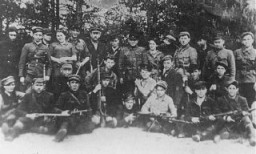
-
1938: Key Dates
ArticleExplore a timeline of key events in the history of Nazi Germany during 1938.

-
Belzec: Key Dates
ArticleExplore key events in the history of the Belzec killing center in the Nazi camp system. It was constructed for the sole purpose of murdering Jews.

-
Zeilsheim Displaced Persons Camp
ArticleAfter WWII, many Holocaust survivors, unable to return to their homes, lived in displaced persons camps in Germany, Austria, and Italy. Read about Zeilsheim DP camp.
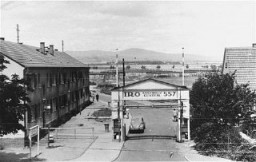
-
Treaty of Versailles Presented to German Delegation
Timeline EventMay 7, 1919. On this date, the Treaty of Versailles was presented to the German delegation. The treaty's "War Guilt Clause" forced Germany to accept responsibility for initiating WWI.

-
The 42nd Infantry Division during World War II
ArticleThe 42nd Infantry Division participated in major WWII campaigns and is recognized for liberating the Dachau concentration camp in 1945.
-
Israel Milkow
ID CardIsrael was born to a religious Jewish family living in the town of Slonim. He was called Yisroel by his Yiddish-speaking parents. Israel's father, Lazar Milkow, was a baker who supported his family on a meager income. 1937-39: Israel's grandparents and many of his mother's relatives lived in a nearby village called Kaslovchina. Each summer one of the Milkow boys was invited to stay in Kaslovchina with their Uncle Herschel who worked as a farmer and horse trader. In September 1939 Slonim became part of the…
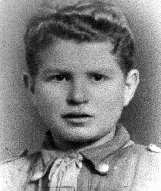
-
Betje Jakobs
ID CardBetje and her sister Saartje were born to Jewish parents in the town of Zwolle in the Netherlands' north central province of Overijssel. Betje was known affectionately as "Bep" to her friends. The Jakobs family owned a successful sporting goods store. 1933-39: As a young girl, Betje enjoyed playing the piano, knitting and tennis. At age 16, while still in secondary school, she began to date Maurits Wijnberg, a boy two years her senior, whose family owned Zwolle's Hotel Wijnberg. 1940-42: The Germans…
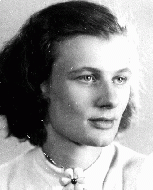
-
Rozia Grynbaum
ID CardRozia was the second-oldest of nine children born to religious Jewish parents in Starachowice, a town in east-central Poland. Their small one-story house served as both the family's residence and their tailor shop. The tailoring was often done in exchange for goods such as firewood or a sack of potatoes. Rozia worked in the shop sewing women's clothing. 1933-39: Rozia married a Jewish tailor from Radom, a large town some 60 miles south of Warsaw. The couple settled in Starachowice, and they ran a tailor…
